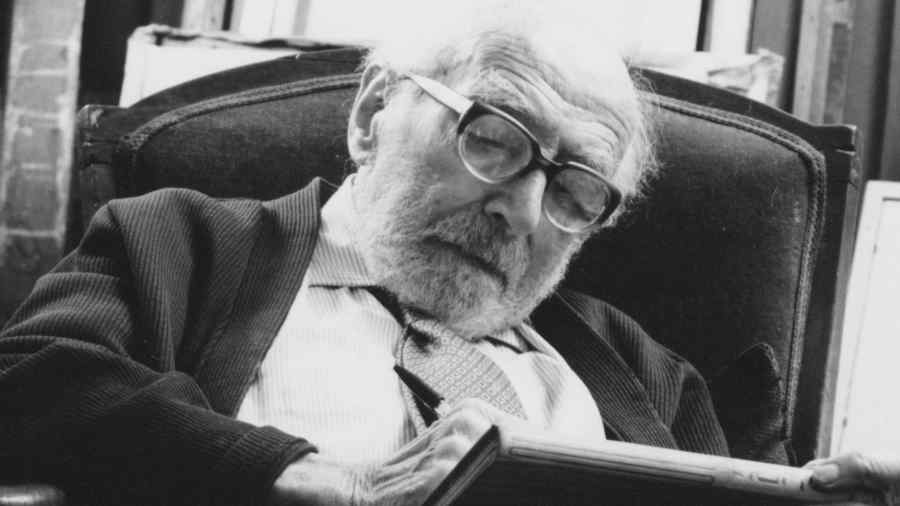Hans Feibusch: The Visionary Artist Who Transformed British Sacred Art

The name Hans Feibusch stands as a remarkable chapter in the story of twentieth-century European art. His life, shaped by migration, displacement, and artistic perseverance, embodies the journey of a talent who refused to let prejudice or oppression silence his voice. Though German-born and trained among the great academies of Continental art, he found his spiritual and professional home in Britain, where he became one of the most influential mural artists of the Church of England. To understand Feibusch is to understand a rare artistic sensitivity: one that carried the emotional depth of Expressionism, the structural clarity of Renaissance mural technique, and the humanistic warmth of religious symbolism.
Early Life and Background
Hans Nathan Feibusch was born in 1898 in Frankfurt am Main, Germany, into an educated Jewish family. His father worked as a dental specialist and encouraged intellectual curiosity in the home. Feibusch’s early exposure to drawing and colour came primarily through his mother, who painted in her spare time. This early influence sparked an artistic sensitivity that would later become the foundation of his career.
During the First World War, Feibusch served in the German army on the Eastern Front. The trauma and instability of war profoundly affected him, shaping his later artistic choices, particularly his focus on emotional expression and human tragedy. After the war, he initially enrolled in medical studies, reflecting the expectations of his family. However, his passion for art proved stronger, leading him to shift to formal training in Berlin, where he studied under influential modernist painters such as Karl Hofer.
His early years were marked by rigorous study, frequent travel, and exposure to the artistic worlds of Munich, Paris, and Rome. During this time, Feibusch absorbed lessons from classical art, Renaissance frescoes, and emerging movements such as Cubism and Expressionism. By the late 1920s, he had already gained recognition in Germany. His painting “The Fishmonger” earned him the prestigious Prussian State Prize for Painting in 1931, affirming his rising reputation.
Forced Exile and Transformation
Feibusch’s promising career took a dramatic turn with the rise of National Socialism in Germany. Being Jewish, his art was labelled “degenerate” under the Nazi cultural policies. Works were removed from German galleries, exhibitions were halted, and opportunities evaporated almost overnight. Faced with discrimination and the growing threat of persecution, Feibusch left Germany in 1933 and fled to Britain.
This transition was not merely geographical. It represented the beginning of a new artistic chapter. In Britain, Feibusch was not known widely at first, but his skills, discipline, and expressive style soon attracted the attention of church leaders, architects, and art patrons who were seeking a revival of religious art in sacred spaces. His natural inclination towards figurative storytelling made him a perfect match for mural work.
The Muralist of the Church of England
Hans Feibusch’s name became closely associated with the revival of church murals in Britain. At a time when many European churches were being restored or rebuilt after bombings and structural decline, Feibusch offered a visual language that was both spiritually profound and artistically modern.
His murals often depicted biblical themes such as resurrection, sacrifice, and divine compassion. These were not mere narrative illustrations; they were emotional, vibrant scenes filled with movement, expression, and symbolic composition. Feibusch’s figures were dynamic—arms extended, bodies spiralled, faces lifted or bowed. The movement in his work conveyed inner states of grief, exaltation, and spiritual transformation.
The murals were painted directly onto the interior walls of churches, meaning they became permanent parts of the architectural space. Feibusch understood that a mural must work in harmony with lighting, architecture, and worship practices. His ability to integrate art with the surrounding environment demonstrated exceptional skill and sensitivity.
Over his career, he created murals in more than thirty churches across the United Kingdom, including notable works in London, Chichester, and Wales. These murals remain among the most significant contributions to religious art in modern Britain.
Artistic Style and Technique
Hans Feibusch’s artistic style bridges classical and modern traditions. His influences are clear: the structural grandeur of the Italian Renaissance fresco painters, the bold emotional colours of Expressionism, and the human-centred narrative focus of Christian iconography. However, his work is distinctly his own.
Several features define his style:
1. Expressive Movement
Feibusch’s figures rarely stand still. Their gestures convey emotional energy—hope, fear, ecstasy, and sorrow. This dynamism gives his murals a sense of spiritual urgency.
2. Vibrant Colour
His colour palette includes deep blues, earthen reds, warm yellows, and luminous whites. The colours do more than illustrate; they guide emotional interpretation, drawing the viewer into the scene.
3. Symbolic Composition
Feibusch arranged figures and shapes with intention. The viewer’s eye is always guided toward themes of divine presence, human vulnerability, and transcendence.
4. Narrative Clarity
Even though his style embraced modernity, Feibusch never abandoned clarity of storytelling. His art remains understandable and moving to all viewers, regardless of artistic background.
Later Life and Recognition
Feibusch’s contributions did not go unnoticed in his adopted country. He became a naturalised British citizen in 1940. Over the following decades, his artistic output expanded to include sculpture, portraiture, and landscape painting in addition to murals.
He was recognised by cultural institutions in both Britain and Germany, where he was eventually honoured for his artistic achievements despite the earlier rejection of his work. His later years included exhibitions, retrospectives, and the transfer of a large portion of his archive to galleries for study and preservation.
Feibusch lived nearly a century, passing away in London in 1998 at the age of 99. His long life allowed him to witness the restoration of his artistic reputation and the lasting influence of his work.
Legacy and Cultural Significance
Hans Feibusch’s legacy is remarkable not only for its artistic merit but also for its historical significance. He represents the countless Jewish artists who were displaced during the twentieth century, yet who continued to enrich the cultures of their new homelands. His work stands as a testament to resilience, artistic conviction, and the human capacity to transform suffering into beauty.
In British art history, Feibusch occupies a unique position. He revitalised the tradition of large-scale religious mural painting at a time when many believed it was obsolete. His work restored the presence of art as a living part of worship—an element of spiritual reflection rather than mere decoration.
Today, his murals continue to inspire viewers. They speak of faith, endurance, redemption, and the shared human journey through suffering toward hope.
Conclusion
Hans Feibusch’s life and work form a powerful narrative of artistic dedication, cultural adaptation, and spiritual expression. From the early influences of European art to his transformative murals across British churches, his creative journey reflects the resilience of the human spirit. His art does more than illustrate stories; it touches the deepest emotional and spiritual dimensions of human experience. In celebrating Hans Feibusch, we celebrate not only an artist but also the enduring power of art to speak across time, culture, and hardship.



